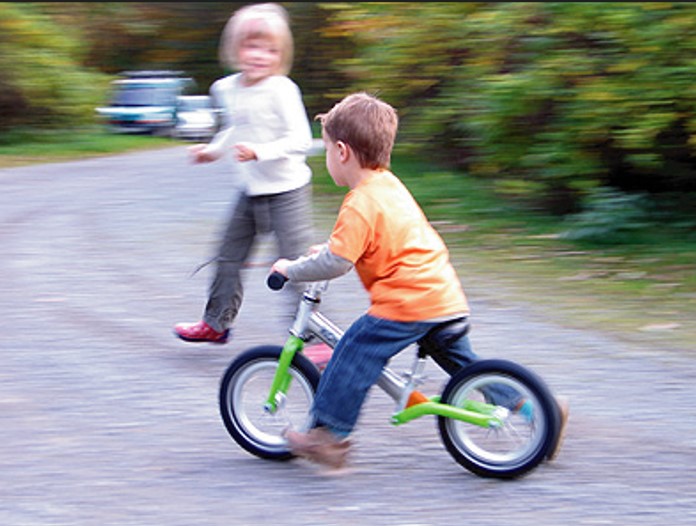Tuesday, 7 March 2023
What if the solution was in subtraction?

Maybe, like I did, you learned to ride a bicycle with training wheels. You started with both of them firmly on the road, keeping you steady. Then, as you gained confidence (which may have taken a while), whoever was teaching you to ride raised them gradually and eventually removed them completely.
But training wheels seem to be a thing of the past. Some time ago, I started noticing tiny little kids very comfortably riding tiny little two-wheel bikes with no pedals, known as “balance bikes”. As Diana Kwon discusses in an October 2021 article in Cerveau & Psycho (a French journal about psychology and the brain), these bikes let children more quickly develop the balance and coordination they need to ride a two-wheeler. But why didn’t somebody think of this great idea sooner? Here’s what Kwon has to say (our translation):
After all, it would seem pretty simple: just build a small bike, then take away the pedals. But as a research team at the University of Virginia has shown, our brain’s natural inclination is to solve problems by adding features (such as training wheels), rather than by removing them when they’re not needed.
In other words, as the title of an article in the April 2021 issue of Nature puts it, people systematically overlook subtractive changes. When we know we need to make a change in a concrete or abstract object, our first instinct is to add something. Here is Kwon’s summary of two experiments discussed in that article (again, our translation):
In the first experiment in their study, the researchers asked 91 participants to make a pattern symmetrical by adding or removing coloured boxes. Only 18 of the participants (20%) accomplished the task by removing boxes. In another experiment, the researchers reviewed 651 proposals for improvements that had been submitted to their university’s new president. The authors found that only 11% of these proposals involved eliminating one of the university’s current regulations, practices or programs!
In contrast, in what is still only a minority trend, some European towns have begun trying to improve highway safety by removing all traffic signage and road markings, even for parking spots, and instead becoming “shared spaces” for motorists, pedestrians, and cyclists. And this approach—removing things instead of adding them—has proven effective: in the pioneering towns that have adopted it in the Netherlands, it has reduced the number of highway accidents substantially.
Apparently, when motorists can no longer rely on traffic signs to tell them what to do, they become more attentive to cyclists and pedestrians, treating them as equals and developing a sense of personal responsibility toward them—something that tends to get lost when people just drive around in their metal boxes, trying to obey the signs while ignoring the other people right in front of them.
Body Movement and the Brain, From Thought to Language | Comments Closed








